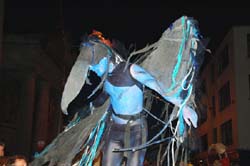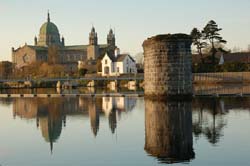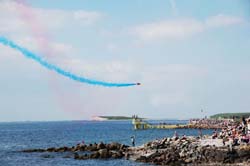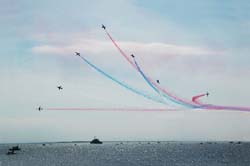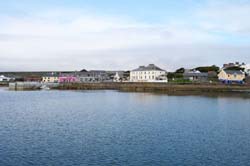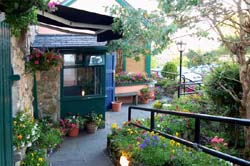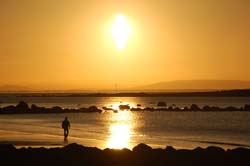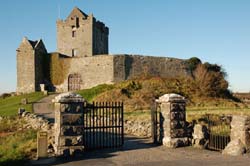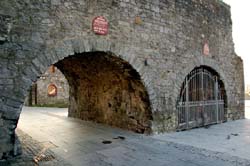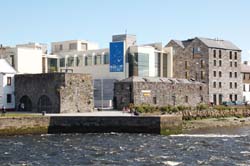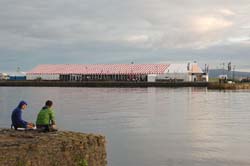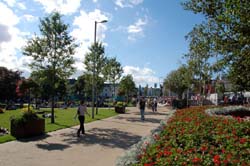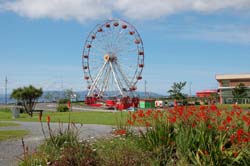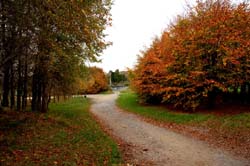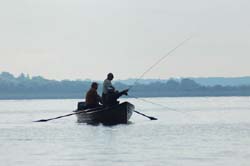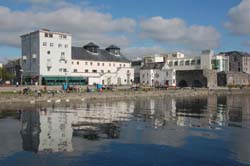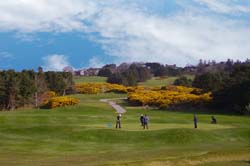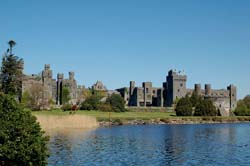Kilbrack House Bed and Breakfast
2 Woodfield, Barna Road, Salthill, Galway, Ireland.
Phone: 091 590802
International: +353 91 590802
Email:
Phone: 091 590802
International: +353 91 590802
Email:
Local Attractions
Connemara and Kylemore Abbey
Connemara is a unique and very special part of the County. It is situated on the most western seaboard of Europe, and features breathtaking scenery, a rugged unpolluted coastline, dramatic mountains, numerous lakes and rivers, woodlands, and a National Park.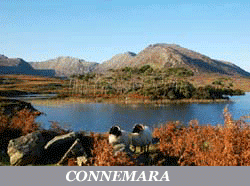 A wide variety of outdoor activities includes fresh water and deep sea angling, walking, cycling, canoeing, surfing, sailing, swimming, diving, sea-cruising, snorkelling, golfing, pony trekking and bird watching. Some of Ireland's finest scenery is in North Connemara.
A wide variety of outdoor activities includes fresh water and deep sea angling, walking, cycling, canoeing, surfing, sailing, swimming, diving, sea-cruising, snorkelling, golfing, pony trekking and bird watching. Some of Ireland's finest scenery is in North Connemara.
The area's National Park covers about 4,000 acres of untamed countryside, around the village of Letterfrack which was founded by the Quakers. Four of the Twelve Ben mountain range, including Galway's highest, Benbaun, are in the park so it's ideal for hill-walking. This area is rich in archaeological remains. The roads around Lough Inagh, Kylemore and Leenane are especially scenic. Killary Harbour, which separates Galway from Mayo, is on the road to Leenane. This long, narrow, fjord like inlet, sheltered by mountain walls, is very impressive.
Cliffs of Moher and The Burren
Many of the views around The Burren are truly spectacular. You won't forget Corkscrew Hill and its vista across Galway Bay; or the journey around Black Head or the view from Ballinalacken Hill across to the Aran Islands.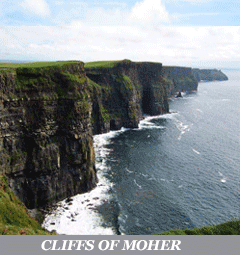 A visit to the Aillwee caves reveals the dramatic underworld of this area. The dominating presence of the Poulnabrone Dolmen a portal tomb dating back to the Neolithic period, between 4200 BC to 2900 BC on the limestone landscape of the Burren meant the tomb was likely a centre for ceremony and ritual until well into the Celtic period.
A visit to the Aillwee caves reveals the dramatic underworld of this area. The dominating presence of the Poulnabrone Dolmen a portal tomb dating back to the Neolithic period, between 4200 BC to 2900 BC on the limestone landscape of the Burren meant the tomb was likely a centre for ceremony and ritual until well into the Celtic period.
The Cliffs are 8kms long 214m high, it is here that one can most easily see the wildness of the terrain over which the Celts wandered, for although they built imposing Castles, very often they preferred the outdoor nomadic life and the hunt. The tower was built by Cornelius O'Brien, a descendant of Brian Boru, the High King of Ireland and the O'Briens of Bunratty Castle and is now used as an observation point for the hundreds of tourists who visit the Cliffs.
From here one can easily view the Cliffs, the Aran Islands, and Galway Bay as well as the Twelve Pins and the Maum Turk mountains to the North in Connemara and Loop Head to the South in County Clare.
Connemara is a unique and very special part of the County. It is situated on the most western seaboard of Europe, and features breathtaking scenery, a rugged unpolluted coastline, dramatic mountains, numerous lakes and rivers, woodlands, and a National Park.
 A wide variety of outdoor activities includes fresh water and deep sea angling, walking, cycling, canoeing, surfing, sailing, swimming, diving, sea-cruising, snorkelling, golfing, pony trekking and bird watching. Some of Ireland's finest scenery is in North Connemara.
A wide variety of outdoor activities includes fresh water and deep sea angling, walking, cycling, canoeing, surfing, sailing, swimming, diving, sea-cruising, snorkelling, golfing, pony trekking and bird watching. Some of Ireland's finest scenery is in North Connemara. The area's National Park covers about 4,000 acres of untamed countryside, around the village of Letterfrack which was founded by the Quakers. Four of the Twelve Ben mountain range, including Galway's highest, Benbaun, are in the park so it's ideal for hill-walking. This area is rich in archaeological remains. The roads around Lough Inagh, Kylemore and Leenane are especially scenic. Killary Harbour, which separates Galway from Mayo, is on the road to Leenane. This long, narrow, fjord like inlet, sheltered by mountain walls, is very impressive.
Cliffs of Moher and The Burren
Many of the views around The Burren are truly spectacular. You won't forget Corkscrew Hill and its vista across Galway Bay; or the journey around Black Head or the view from Ballinalacken Hill across to the Aran Islands.
 A visit to the Aillwee caves reveals the dramatic underworld of this area. The dominating presence of the Poulnabrone Dolmen a portal tomb dating back to the Neolithic period, between 4200 BC to 2900 BC on the limestone landscape of the Burren meant the tomb was likely a centre for ceremony and ritual until well into the Celtic period.
A visit to the Aillwee caves reveals the dramatic underworld of this area. The dominating presence of the Poulnabrone Dolmen a portal tomb dating back to the Neolithic period, between 4200 BC to 2900 BC on the limestone landscape of the Burren meant the tomb was likely a centre for ceremony and ritual until well into the Celtic period.The Cliffs are 8kms long 214m high, it is here that one can most easily see the wildness of the terrain over which the Celts wandered, for although they built imposing Castles, very often they preferred the outdoor nomadic life and the hunt. The tower was built by Cornelius O'Brien, a descendant of Brian Boru, the High King of Ireland and the O'Briens of Bunratty Castle and is now used as an observation point for the hundreds of tourists who visit the Cliffs.
From here one can easily view the Cliffs, the Aran Islands, and Galway Bay as well as the Twelve Pins and the Maum Turk mountains to the North in Connemara and Loop Head to the South in County Clare.
